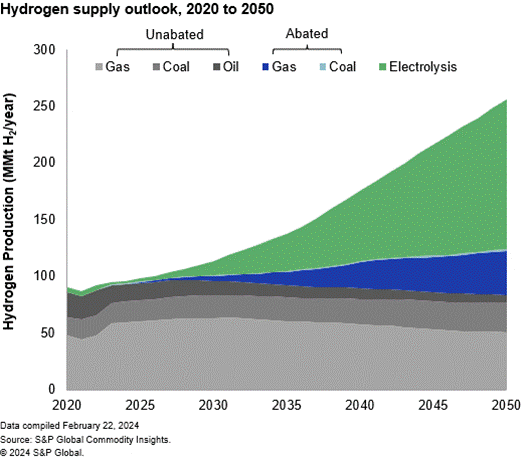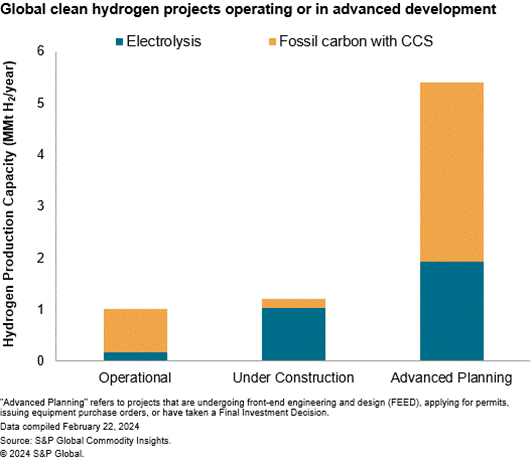Open Hydrogen Initiative Unveils Open-Source Toolkit to Measure Hydrogen’s Carbon Intensity at Facility Level, Aiding Marketplace Development
New toolkit aims to help unlock hydrogen’s full potential and bring greater transparency to hydrogen markets
March 25, 2024
Chicago, New York


The Open Hydrogen Initiative (OHI), today announced a first-of-its-kind open-source toolkit aimed at furthering transparency into the environmental impact of hydrogen production. This toolkit, which will help to unlock hydrogen’s full potential as a fuel alternative and important driver of energy transition, was unveiled by founding partners GTI Energy and S&P Global Commodity Insights, and a cohort of collaborators from a diverse field of industry, academic, and scientific experts worldwide. This industry-leading toolkit for measuring carbon intensity is available on an open-source basis.
As evidenced by key international discussions at COP28, hydrogen remains one of the key pathways to energy transition and global decarbonization goals. The OHI toolkit facilitates solutions towards these goals.
OHI has gained industry and marketplace momentum since its launch in late 2022. In addition to its initial Foundational Sponsors, National Grid, Capgemini, EQT, EY, and Shell, the international cohort has expanded to more than 40 organizations spanning a wide array of sectors and geographics.
“The OHI toolkit offers open and auditable emissions accounting to help companies and governments understand the tradeoffs between the cost and environmental impacts of hydrogen,” said Paula Gant, Ph.D., President and CEO of GTI Energy. “We are proud of this collaboration which brings together technical expertise, real-world insights, and decades of experience to help the market connect demand for low-carbon energy with suppliers and investments that will spur the hydrogen economy.”
“Regulators, international agencies and market participants all recognize that tools that drive deep and detailed understanding of carbon intensity are a vital part of the development of carbon differentiated commodity markets,” said Alan Hayes, Head of Energy Transition Pricing and Market Data at S&P Global Commodity Insights. “Understanding a commodities decarbonization potential via its carbon intensity and having the tools and data to assign a dollar value will play a central role in helping markets deliver a low carbon economy.”
The OHI toolkit has been demonstrated in 13 industry projects spanning two continents and contains detailed analyses for more than 200 technologies across 270 countries and regions of the world. It is the most comprehensive open-source hydrogen life cycle assessment (LCA) toolkit available to the market, setting a new standard for quantifying trust in data.
The need to understand carbon intensity across commodity and related markets is being put at the center of regulations around the world. Mechanisms such as the Inflation Reduction Act in the U.S., support mechanisms in the EU, and emerging contract for difference schemes in parts of Asia all incorporate a detailed understanding of the carbon intensity associated with each potential production pathway.
This toolkit delivers on the initial mission of OHI, to create an industry-led objective, credible, and harmonized methodology and toolkit for measuring the carbon intensity of hydrogen production at the facility level to lay the foundation for a low-carbon hydrogen marketplace.
HYDROGEN SUPPLY TO GROW 170% BY 2050
Hydrogen supply is on a trajectory to grow 170% by 2050, according to S&P Global Commodity Insights, from 2023’s 95 million metric tons (mmt) to 114 mmt in 2030 and 256 mmt in 2050. Last year, 98% of global hydrogen supply was from fossil fuels, with only a small fraction of associated emissions abated by carbon capture and sequestration. The forecast for low-carbon technologies like carbon capture and storage and water electrolysis to produce 16% of hydrogen in 2030 and 68% in 2050, is driven mostly by growth in electrolysis.
Long term, demand growth is driven by the uptake of clean hydrogen in new sectors, and an industry-standard emissions measurement and verification process is key to providing the market transparency that facilitates new supply agreements.


To lend your expertise or learn more about this the initiative, visit gti.energy/OHI or contact OHI@gti.energy.
About S&P Global Commodity Insights
At S&P Global Commodity Insights, our complete view of global energy and commodity markets enables our customers to make decisions with conviction and create long-term, sustainable value.
We’re a trusted connector that brings together thought leaders, market participants, governments, and regulators and we create solutions that lead to progress. Vital to navigating commodity markets, our coverage includes oil and gas, power, chemicals, metals, agriculture, shipping and energy transition. Platts® products and services, including leading benchmark price assessments in the physical commodity markets, are offered through S&P Global Commodity Insights. S&P Global Commodity Insights maintains clear structural and operational separation between its price assessment activities and the other activities carried out by S&P Global Commodity Insights and the other business divisions of S&P Global.
S&P Global Commodity Insights is a division of S&P Global (NYSE: SPGI). S&P Global is the world’s foremost provider of credit ratings, benchmarks, analytics and workflow solutions in the global capital, commodity and automotive markets. With every one of our offerings, we help many of the world’s leading organizations navigate the economic landscape so they can plan for tomorrow, today. For more information visit https://www.spglobal.com/commodityinsights.
About GTI Energy
GTI Energy is a technology development and training organization. Our trusted team works to scale impactful solutions that shape energy transitions by leveraging gases, liquids, infrastructure, and efficiency. We embrace systems thinking, innovation, and collaboration to develop, scale, and deploy the technologies needed for low-emission, low-cost, and resilient energy systems.
Share This News
We welcome you to share via your social media or email